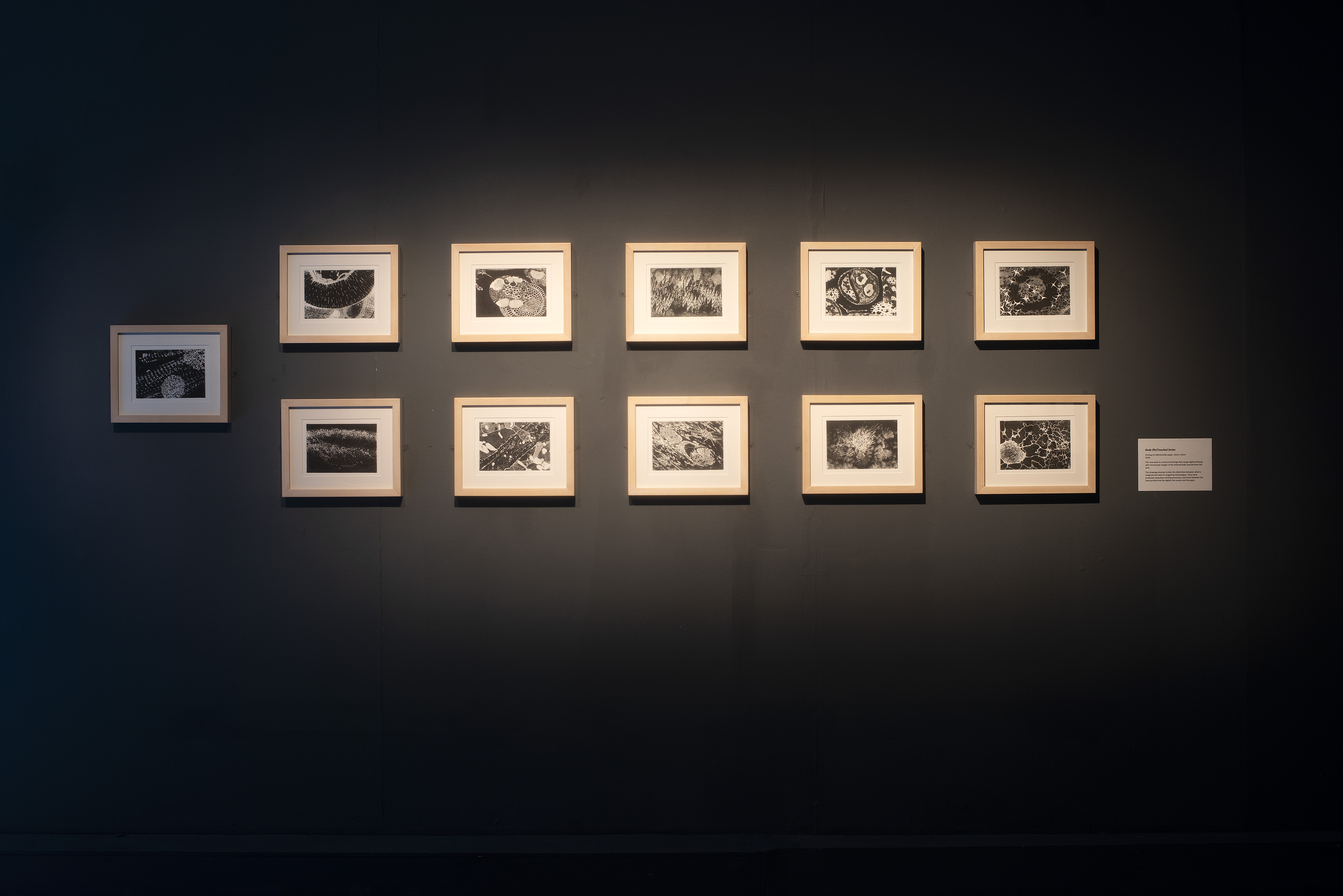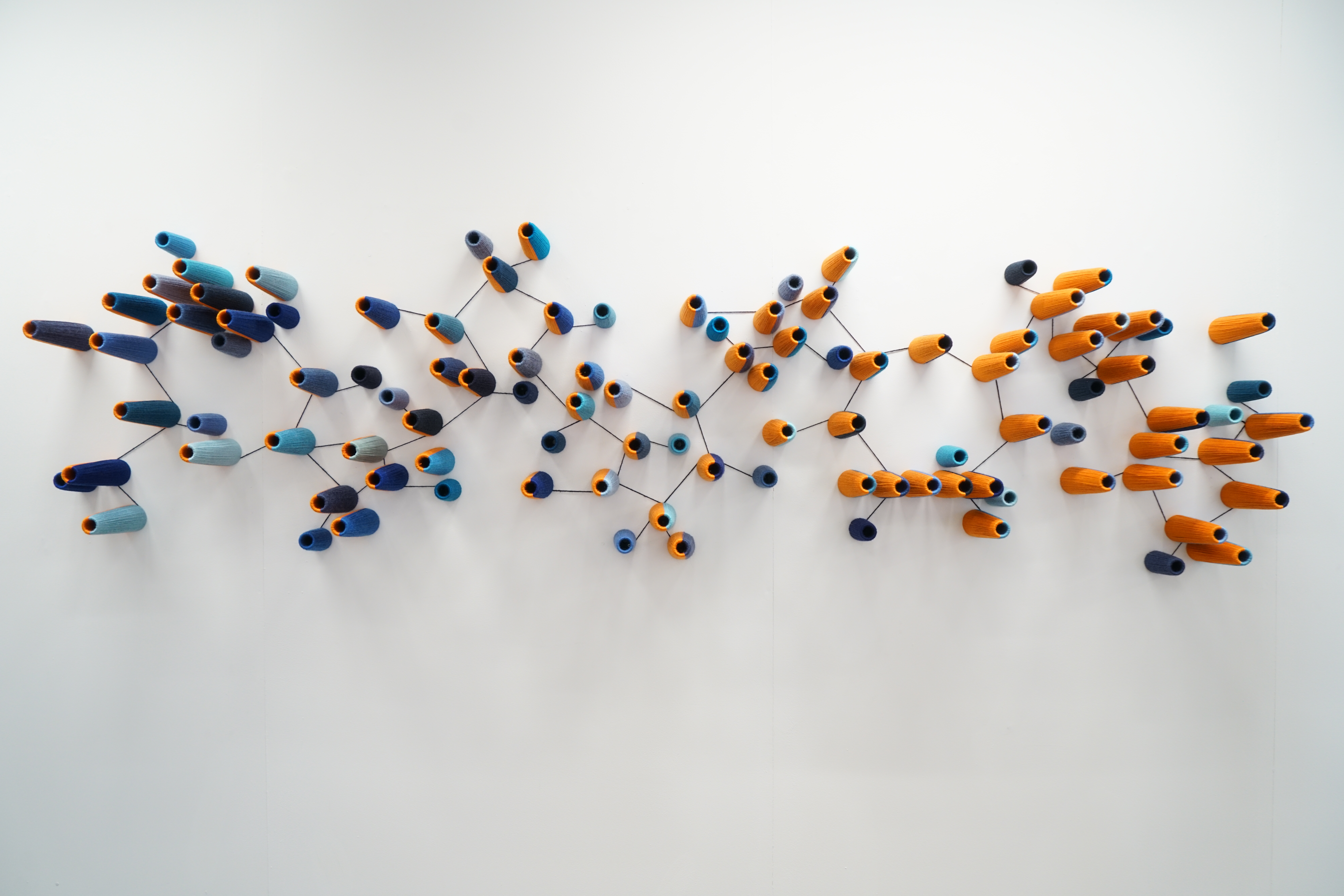Dr. Daksha Patel
Daksha Patel is a Manchester based artist whose work encompasses installation, animation, textiles, print and drawing. She has an on-going interest in scientific processes of measurement, mapping and visualisation. Her residencies and research involve a wide range of contexts such as medicine, applied mathematics, astronomy, museology conservation and textiles manufacturing. Recent exhibitions include ‘Misprints’, ‘Biorhythmic Drawing’and ‘Connecting Yarns’. Her new animation ‘in the same breath, combines creative coding with the hand drawn. This work evolved out of her PhD research project ‘Noise+Signal’ at Northumbria University. Daksha is currently creating a print-based costume for a dancer, for a filmed performance in the Life Science museum at King’s College, London. The film will be the culmination of her residency in the anatomy department at King's.
Thesis Title: The Concept of Noise in Medical Visualisation s Perceived Through a Contemporary Drawing Practices
This visual arts practice-led research project explores the concept of noise in medical visualisations. It evolved from my experience of a medical study and my on-going interest in medical visualisations as a stimulus for my drawings. Noise – which is the informational opposite to signal in science – is an unknown and highly ambiguous aspect of scientific practice that cannot be eradicated. It is discernible as ambiguous visual traces in medical visualisations that can be difficult to distinguish from signals. Vision is therefore, deeply implicated in how scientists perceive noise.
A residency in a medical imaging institution was undertaken to investigate scientists’ perceptions of noise and to identify its key attributes. Conversations with contemporary artists and an examination of their work, explored how noise attributes are used as a strategy in their practices. Theories from art history and the neuropsychology of vision were used to interrogate how noise is implicated in visual perception. Critically, my on-going drawing explorations using instruments of vision, biosensor technologies and responding to unknown stimuli interrogated my artistic perceptions of noise.
My research identified that unknown movements and interactions are deeply implicated in the generation of noise and that the distinction between signal and noise is unstable. My practice-based investigations revealed that my sensory perceptions become heightened in response to noise, so that vision becomes inseparable from other sensory perceptions. This was an important difference between scientists’ and artists’ perceptions of noise, for scientists do not recognise the full sensorium in their practice. The writings of Jean-Luc Nancy and Michel Serres were used to elucidate this process.
This research demonstrates the differences between artistic and scientific perceptual responses to ambiguity, the unknown and to noise. It evidences that artistic responses to noise can be a catalyst for change, generating new ways of perceiving, working and making.
By illuminating the multiple loss experienced by families struggling with physical and social decline, this research offers a practical and theoretical image of the capacity contemporary artists have to shape research into myotonic dystrophy. The study will argue that this capacity is more ambitious than illustration, more extensive than the communication of family insights. Thus it can embrace a much-needed form of research leadership that is built upon an artist’s scope to say powerful things by withholding information. In addition, the employment of feminist literature on ageing and appearance, and sociological research into the decline and isolation of affected families, helps define the particular form of leadership that can arise through extreme personal circumstances.
Awarded Date: 17/09/2018
Principal Supervisor: Siân Bowen
Second Supervisor: Chris Dorsett
Additional Supervisor: Professor Christine Borland
Link to Thesis
Website


